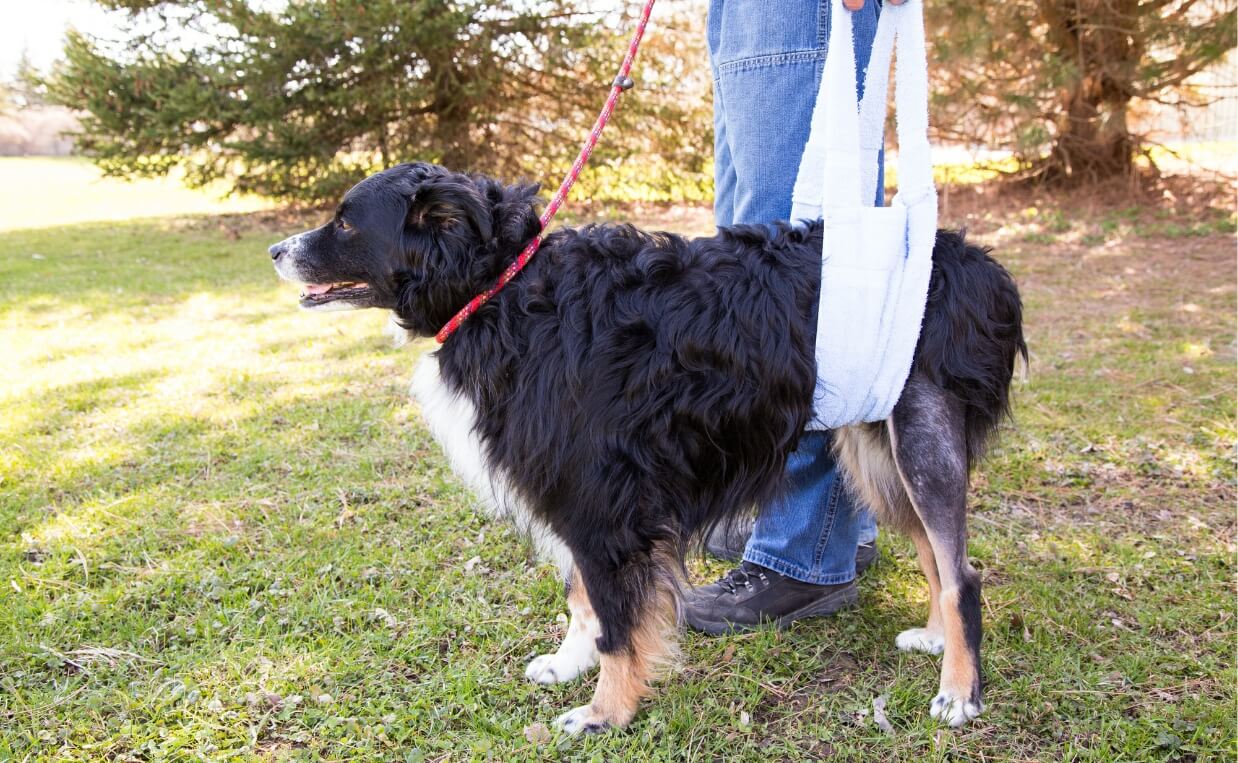
A torn cranial cruciate ligament (CCL) is a common injury in dogs. A torn anterior cruciate ligament (ACL) is the human equivalent of this condition, although they are not the same.
The CCL in dogs is one of the most important stabilizing structures of the canine knee joint. The CCL holds the knee joint in place, helps it keep from hyperextending and guides the knee through its normal range of motion. Tearing or rupturing the CCL is one of the most common reasons for hind limb pain, lameness and arthritis in dogs. Keep in mind a CCL rupture is incredibly painful for your dog.
No one likes to see their beloved pet in pain. If you suspect your dog has a cranial cruciate ligament rupture, you probably have quite a few questions. Here is some information to help you better understand the treatment options available and help you make the best choice for your dog.
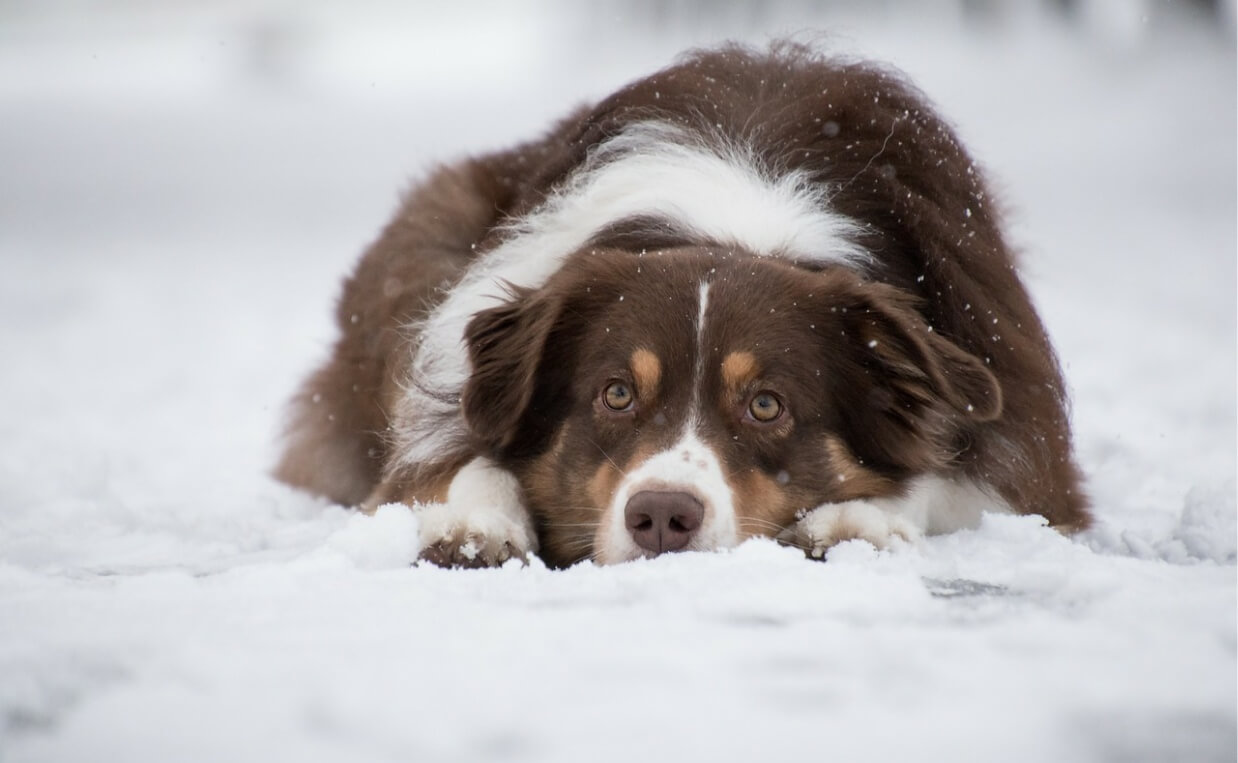
What is a Cranial Cruciate Ligament Rupture?
The cranial cruciate ligament (CCL) is one of the most important stabilizers inside the canine knee. The meniscus is a cartilage-like structure between the shin and thigh bone. It serves many important functions in the joint such as shock absorption, proprioception (the body’s ability to sense movement, action, and location), and load bearing and is frequently damaged when the CCL is injured.
This problem in dogs is much more complex than a human ACL tear. Furthermore, dogs suffer from different degrees of rupture (partial or complete). While the clinical signs of CCL rupture will vary, the condition invariably causes rear limb dysfunction and pain.
What Causes a Cranial Cruciate Ligament Rupture in Dogs?
Most commonly, a torn CCL is caused by a combination of several factors, including:
- Degeneration (aging)
- Obesity
- Poor physical condition
- Genetics
- Conformation (skeletal shape and configuration)
- Breed
Typically, a torn CCL is a result of slow, long-term degeneration over months or even years rather than a sudden injury to an otherwise healthy ligament. Dogs who have this condition in one knee have a very high chance of having it happen to the other knee, usually within a short span of time (within a year). Partial tearing of the CCL is common in dogs and will almost always progress to a full tear over time.
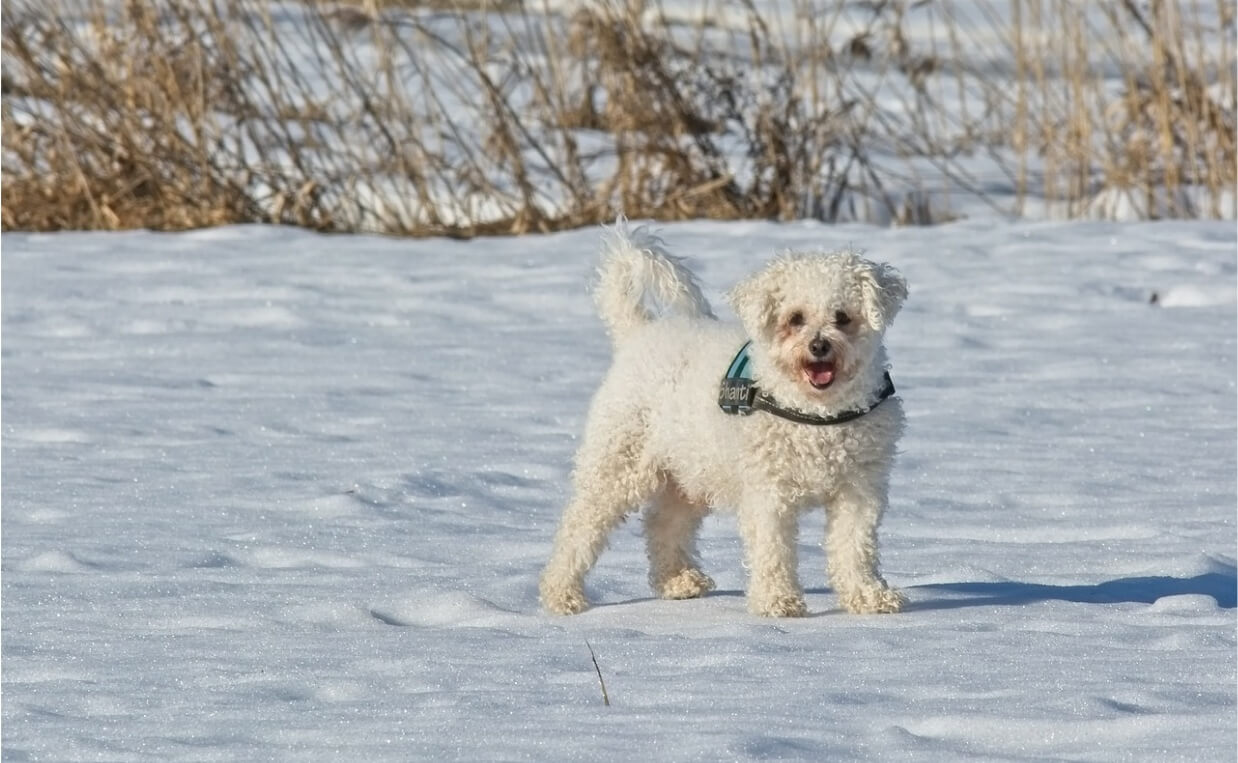
Certain dog breeds are at a higher risk of developing this condition, including:
- Bichon Frisé
- German shepherd
- Labrador retriever
- Newfoundland
- Rottweiler
- Saint Bernard
- Australian shepherd
- Staffordshire terrier
- Mastiff
- Akita
- Chesapeake Bay retriever
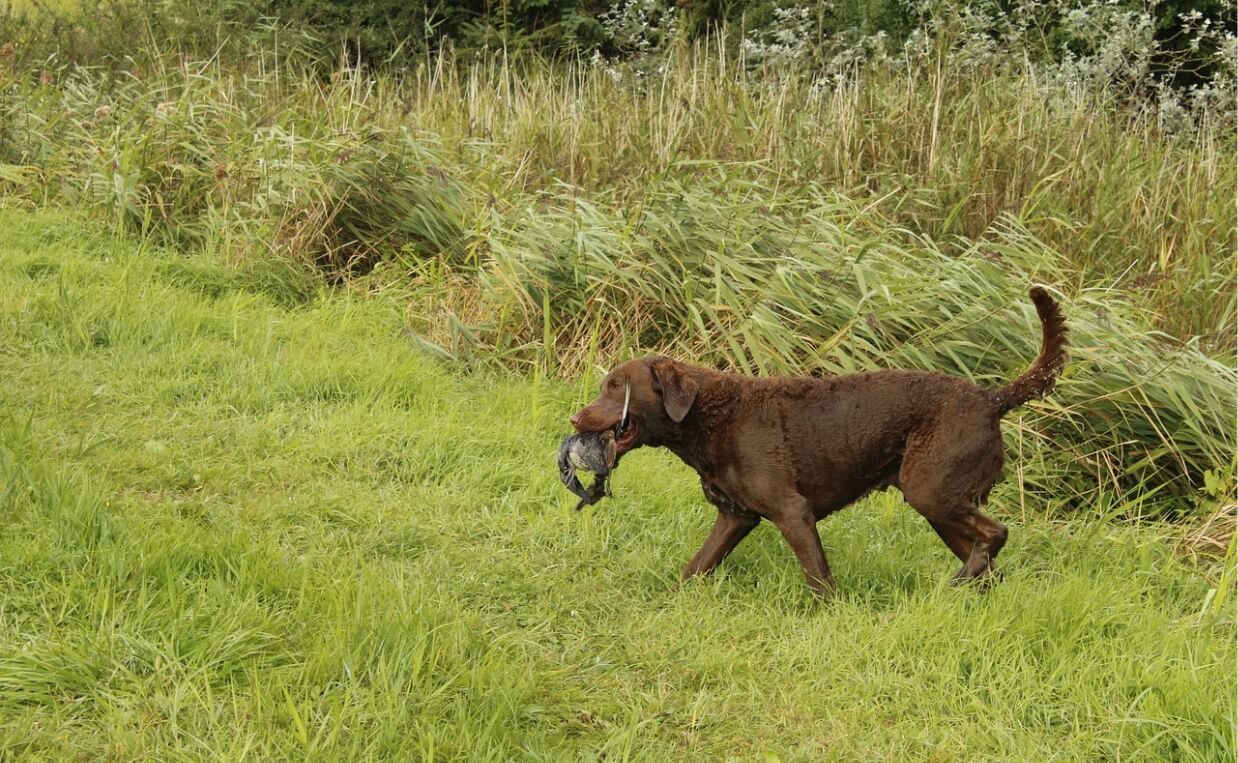
Signs and Symptoms of a Cranial Cruciate Ligament Rupture
A cranial cruciate ligament rupture occurs due to progressive degeneration from a very mild tearing to a complete tear in the later stages of the condition. At first, you may notice your dog has:
- Trouble getting up
- Trouble jumping into the car
- Decreased activity level
- A tendency to sit with their legs out to the side
- Muscle atrophy (decreased muscle mass in the leg)
- Decreased range of motion
- Popping noise (may indicated a meniscal tear)
- Swelling on the inside of the shin bone
- The tendency to shift their weight away from the damaged leg
When a partially-damaged ligament ruptures completely or the meniscus becomes damaged your dog may also become non-weight bearing and may hop on three legs. This change in lameness may happen suddenly, usually without major trauma (a minor trauma like turning suddenly while running to fetch a ball may cause a full rupture).
Dogs with chronic (late stages) of cranial cruciate ligament disease usually show symptoms associated with arthritis, such as decreased activity, stiffness, unwillingness to play, pain, etc.)
If your dog is displaying any of these symptoms, be sure to have him or her examined by a veterinarian.
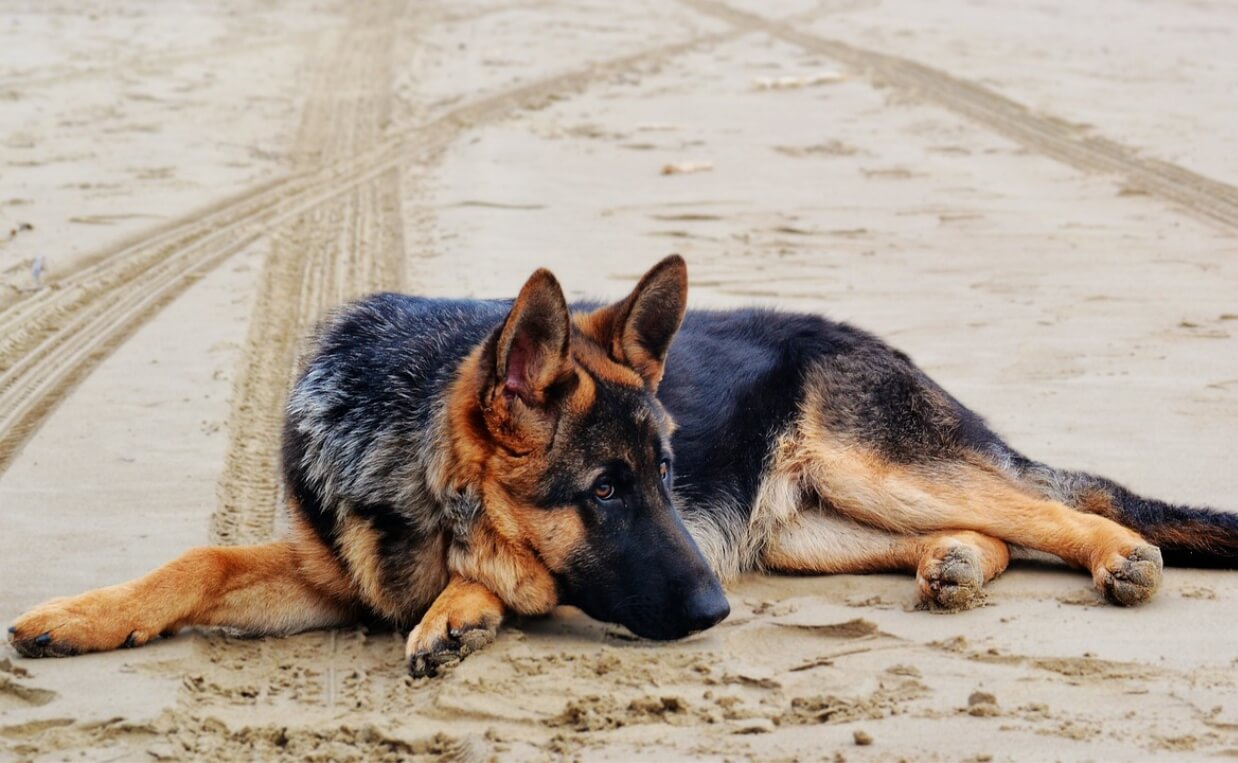
Diagnosis of a Cranial Cruciate Ligament Rupture
A veterinarian will be able to diagnose a torn CCL through observation of your dog’s gait, palpation of your dog’s leg and x-rays. However, it can be difficult to diagnose an early partial tear. This may require an MRI or surgical exploration.
Differential Diagnoses
While a ruptured cranial cruciate ligament is a common reason for persistent pain and lameness in dogs, there are numerous other causes of pain and lameness in the canine rear limb. Your veterinarian will need to rule out these other conditions to determine the best treatment for your dog. Other conditions include:
- Hip dysplasia
- Joint sprains or muscle strains
- Knee cap displacement
- Neurologic disease (such as a ruptured disc)
- Bone or soft tissue cancer
- Fractures
- Joint dislocations (luxations)
- Tendon rupture
- Panosteitis (an inflammatory bone disease seen mainly in young, large breed dogs)
- Osteochondrosis (cartilage disease)
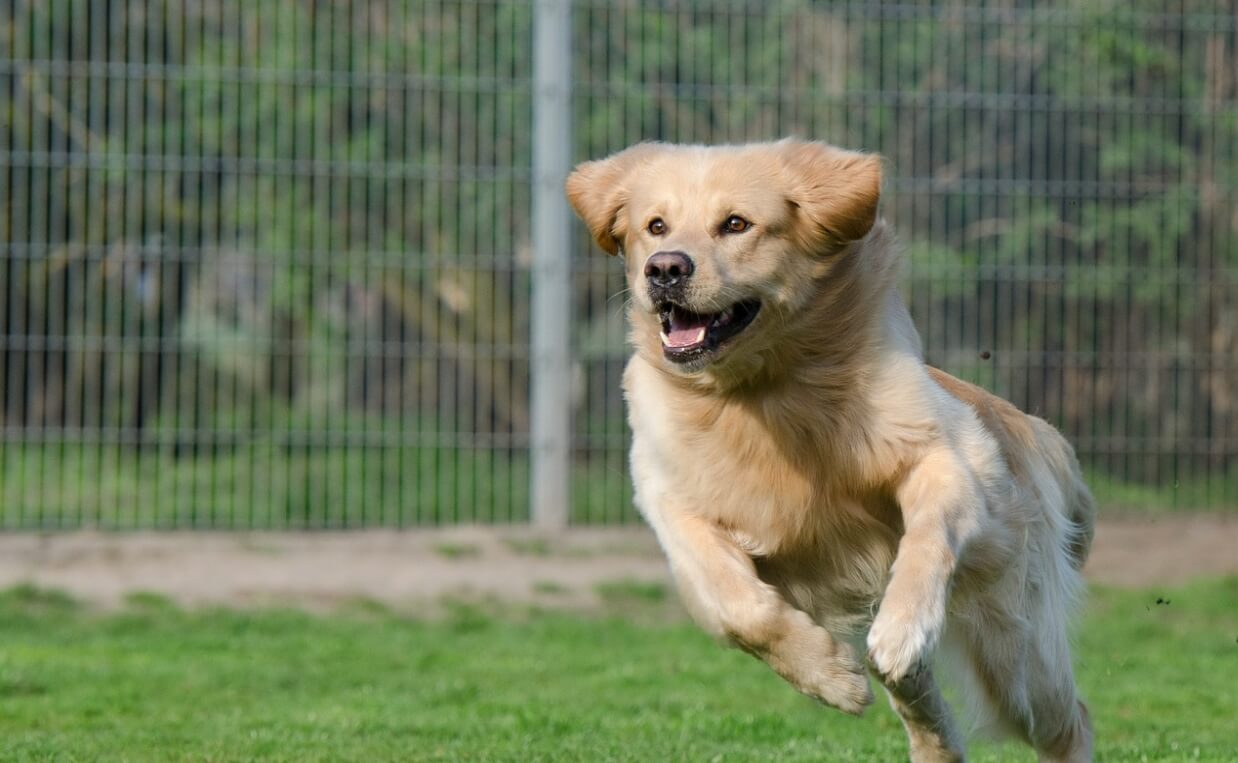
Complications of a Cranial Cruciate Ligament Rupture
The most common complication of a CCL rupture is long-term impairment due to arthritis. Other complications include:
- Loss of range of motion
- Muscle atrophy
- Loss of full function of the limb
- Decreased activity
Unfortunately, veterinary surgeons are not able to completely restore normal joint anatomy and function. Arthritis is expected and is a non-reversible disease. Even with surgical intervention, some progression of arthritis is expected. It is important to understand everything should be done to prevent the development or progression of the disease. Therefore, two steps are crucial when treating CCL ruptures: surgical repair and medical management of arthritis.
Another complication of a torn CCL is tearing of the meniscus. The medial (inside) meniscus can become damaged due to the instability of the knee joint. A meniscal tear is very painful and if left in place the animal will not regain full function. Any damaged parts of the meniscus will be removed by the surgeon when surgery for a ruptured CCL is performed.

Cranial Cruciate Ligament Rupture Treatment Options
There are many treatment options for a CCL rupture. The best option for your pet depends on many factors such as your dog’s activity level, size, age, skeletal configuration, and degree of knee instability.
-
Surgical Techniques
In general, surgery is recommended because it is the only way to permanently control the instability of the knee and damage to the inside of the meniscus commonly seen in conjunction with CCL.
Surgical techniques require a bone cut (osteotomy) which changes the way the quadriceps muscles act on the top of the shin bone. Stability of the knee joint is achieved without replacing the CCL itself, but rather by changing the biomechanics of the knee joint. There are two types of surgeries performed to correct a torn CCL, a tibial plateau leveling osteotomy (TPLO) or tibial tuberosity advancement (TTA). Many surgeons prefer the TPLO, especially for large, active dogs.

-
Tibial plateau leveling osteotomy (TPLO)
By far the most common surgery to correct a ruptured CCL, this surgery requires a cut in the bone to relevel the knee joint. The cut in bone needs to be stabilized by the use of a bridging bone plate and screws. The advantage of this surgery is the superior limb function and less progression of arthritis, especially for young, large breed dogs. The major disadvantage is the need to perform such a major surgery. Healing of the bone can take time and if there is an implant failure or issue with the bone, the outcome may be poor.
-
Tibial tuberosity advancement (TTA)
This surgery requires a linear cut along the shin bone. The front of the shin bone, called the “tibial tuberosity” is advanced forward until the attachment of the quadriceps is oriented approximately 90 degrees to the tibial plateau. This orientation renders the knee stable, independent of the CCL. This surgery also requires a bridging bone plate and screws. This surgery may be a better solution depending on the skeletal configuration of the limb.
-
Suture Techniques
There are two types of suture techniques: intra-articular (within the joint) and extra-articular (outside the joint) procedures. While suturing techniques are highly effective in humans, extensive research in dogs has found most suture techniques are not successful, mostly due to anatomy and underlying disease process.
Some surgeons are revisiting extra-articular suturing using a strong suture material placed outside the joint to mimic the CCL and stabilize the joint.
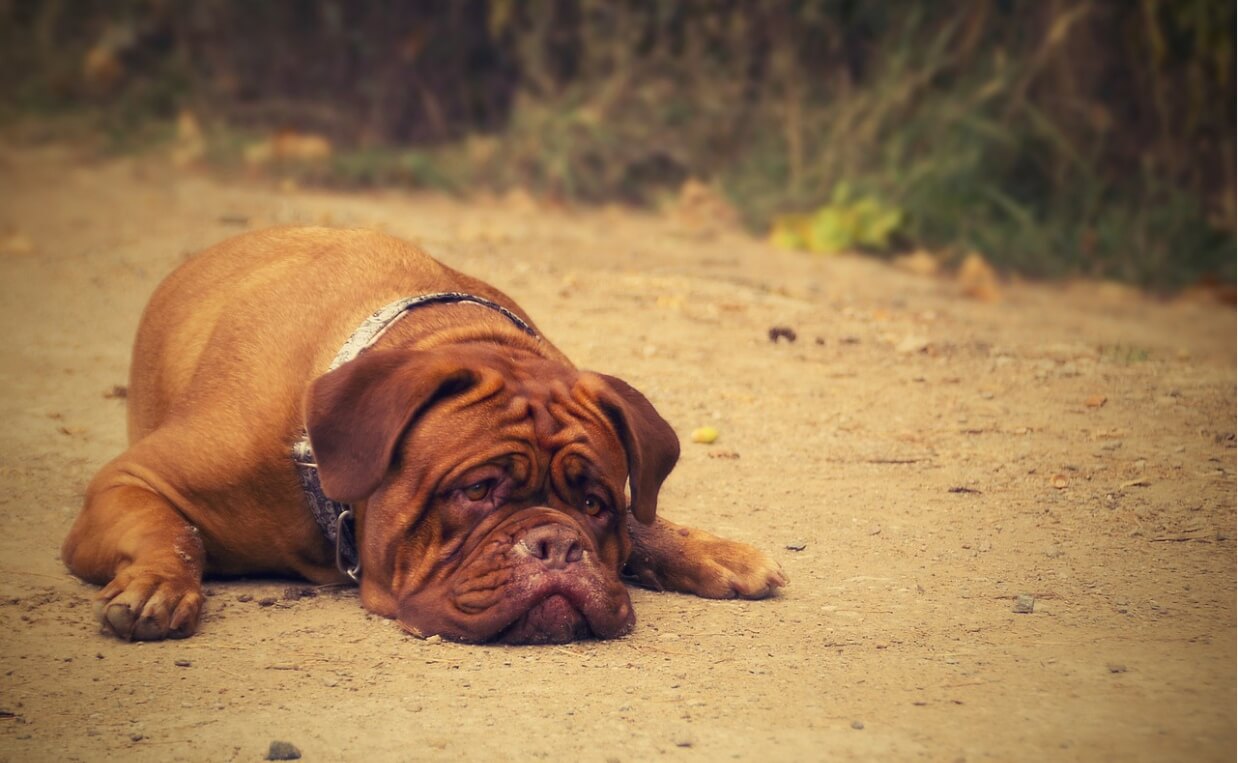
-
Alternative Techniques
There are a range of alternative treatment modalities because CCL surgery is invasive and can be expensive. The effectiveness of alternative treatments depends on several variables including the severity of the tear, your dog’s age, general health and activity level, current medications, and more.
Here are a few alternative treatment options. Talk with your veterinarian to determine if any of these are an option for your dog.
-
Prolotherapy
Prolotherapy is also called proliferation therapy or regenerative injection therapy. A veterinarian injects an irritant solution into the injured tendon or ligament during prolotherapy. This stimulates the healing of the tear and relieves pain. It is only used in partial tears; a complete tear requires surgery.
-
Knee brace
An orthopedic knee brace is a non-rigid brace used to stabilize and support the knee brace. It can help dogs who suffer from a torn CCL or any kind of sprain or strain of the knee.
The purpose of the brace is to stabilize the knee by limiting flexion and extension so scar tissue can form a callus over the tear for healing.
These treatments can help aid in your dog’s recovery from a CCL tear and/or surgery.
- Acupuncture
- Supplements (fish oil, turmeric, and glucosamine)
- Swimming
- Massage
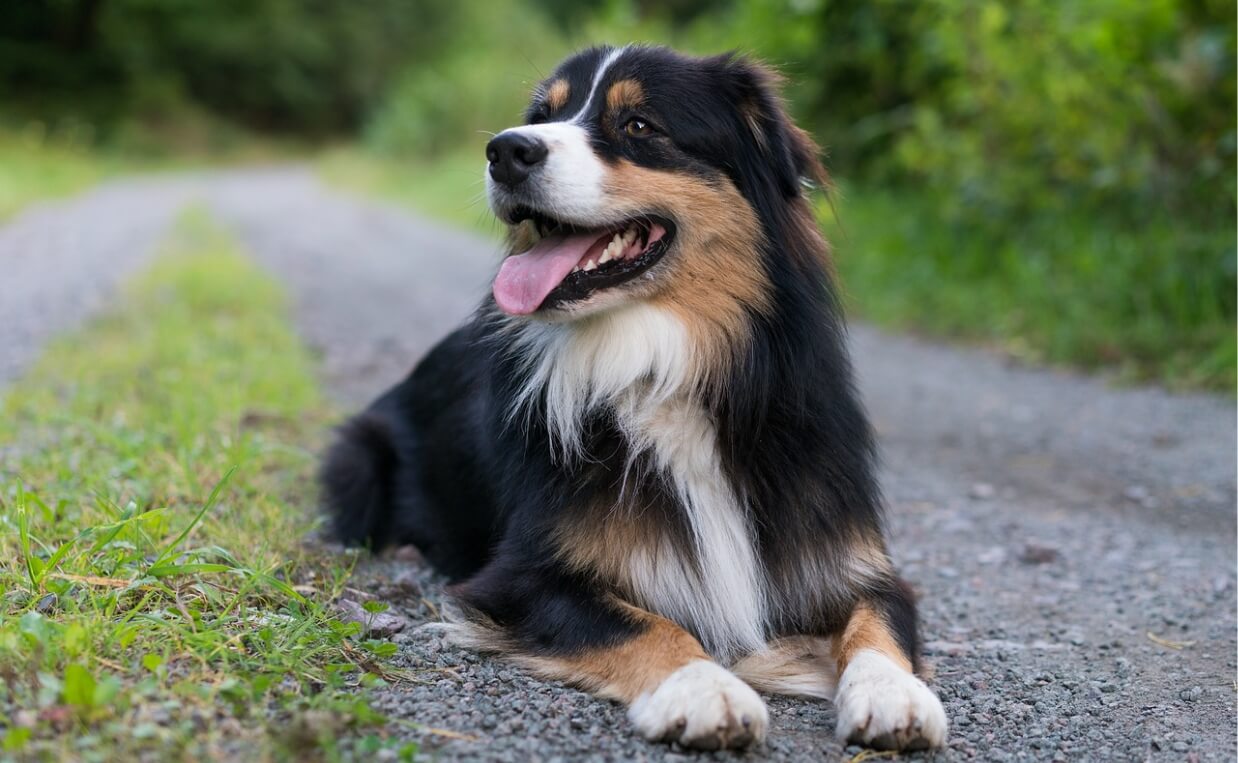
Aftercare and Recovery
You will receive discharge instructions when you pick up your dog after surgery. Your dog will require at least 3 months of exercise restrictions following surgery. This means your dog won’t be able to:
- Run around free in the backyard
- Go for leash walks
- Walk up and down stairs
- Jump or rough house play
Your dog will need physical therapy and rehabilitation and a detailed program will be discussed with you. This will involve leash walks with increasing duration and intensity. Your dog will also need therapeutic exercises to strengthen the muscles of the affected leg as well as core stabilizing exercises.
Most dogs are able to return to normal activities after 3-4 months. Failure to follow the exercise restrictions could result in severe complications and may require further surgery.
The skin sutures or staples will need to be removed 2 weeks after surgery which means your dog will need to wear a cone collar to prevent him or her from licking or grooming the area of the surgery. Suture removal is often performed by your veterinarian or veterinarian technician. Follow up appointments will typically be required at 4-6 weeks and 3 months after surgery, at which time x-rays will be needed to ensure everything is healing properly.
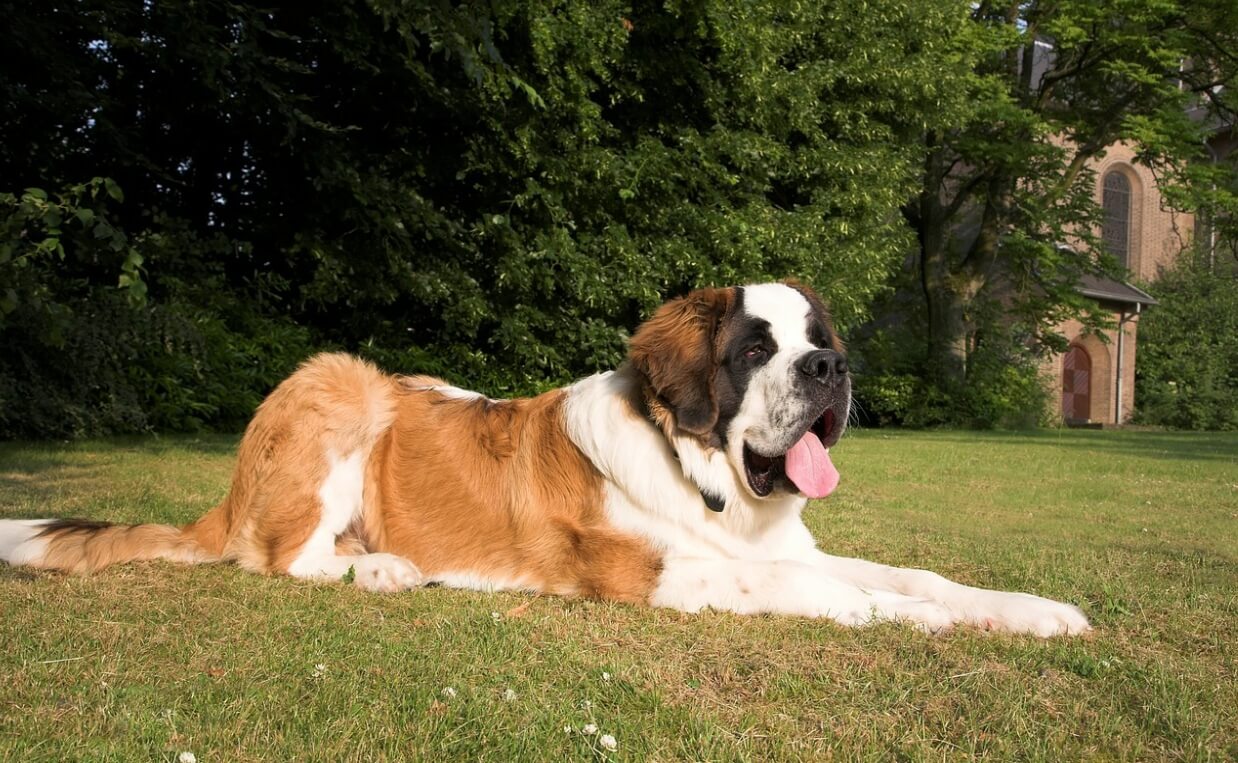
How Much Does Cranial Cruciate Ligament Surgery Cost for a Dog?
The cost of surgery for dogs varies depending on the type of surgery to be performed, the size of your dog and your location. On average, you can expect to pay a minimum of $2,000 to $4,000 for CCL surgery for dogs.
Does Pet Insurance Cover Cranial Cruciate Ligament Surgery?
Yes, pet insurance typically covers some or all of the cost of a cranial cruciate ligament surgery, unless your dog’s CCL rupture is considered a pre-existing condition. Be sure to check your policy or contact your insurance agent to find out whether your dog’s surgery will be covered.
Most pet insurance companies will require you to pay the full cost of the surgery out-of-pocket and then reimburse you, so you still need to be prepared to cover the cost of your dog’s surgery up front.
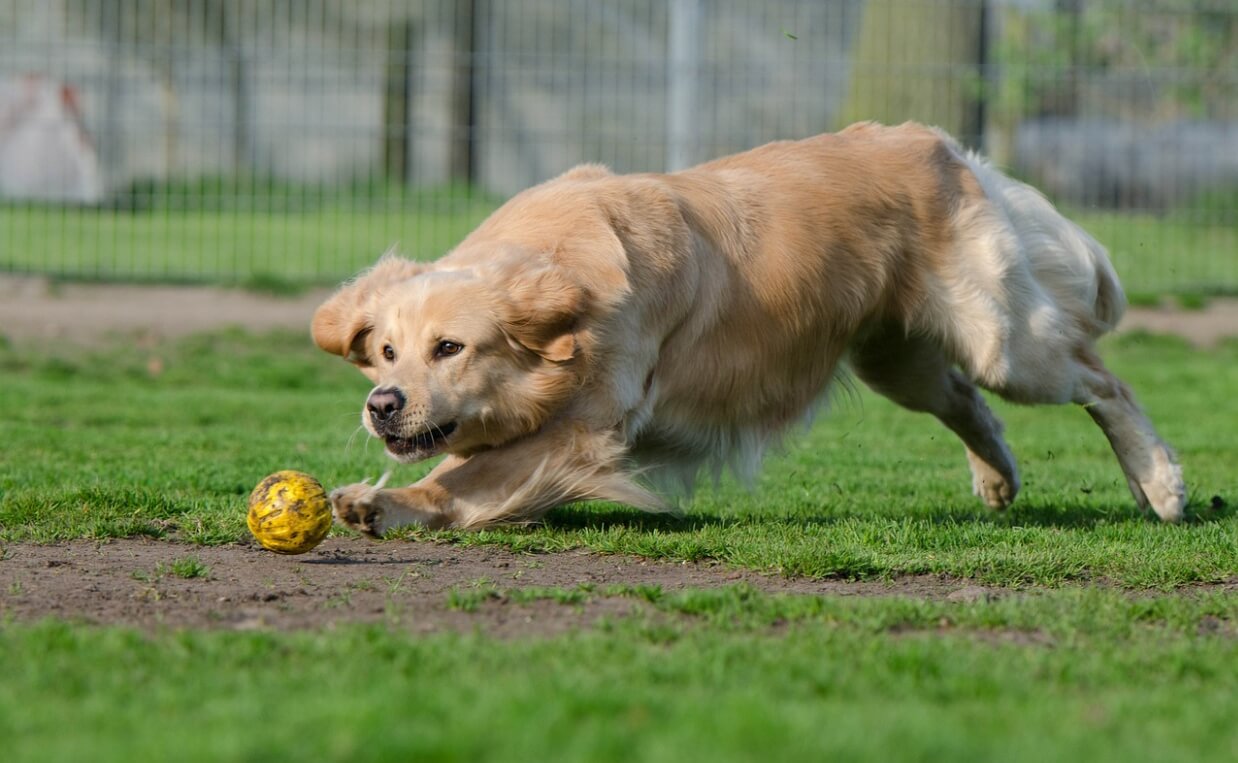
Final Thoughts
Your veterinarian will discuss your dog’s condition and which procedure is best. There are many factors to consider so make sure you ask questions and listen carefully to what your veterinarian recommends.
Pain management during and after CCL surgery is critical, so make sure to give all medications as prescribed until they are gone. Physical therapy will help your dog heal, so be sure to ask your veterinarian about incorporating rehabilitation into your dog’s recovery plan.
Has your dog had a cranial cruciate ligament rupture? What treatment option did you choose? Please share your experience in the comments below…

 What Every Dog Owner Needs to Know About Canine Coronavirus
What Every Dog Owner Needs to Know About Canine Coronavirus Does Seasonal Affective Disorder Affect Dogs?
Does Seasonal Affective Disorder Affect Dogs? 10 Most Common Health Concerns in Small Breed Dogs
10 Most Common Health Concerns in Small Breed Dogs 5 Tips for Preventing Obesity in Your Dog
5 Tips for Preventing Obesity in Your Dog The Ultimate Guide to Foods You Can and Can’t Feed Your Dog
The Ultimate Guide to Foods You Can and Can’t Feed Your Dog






Leave a Reply